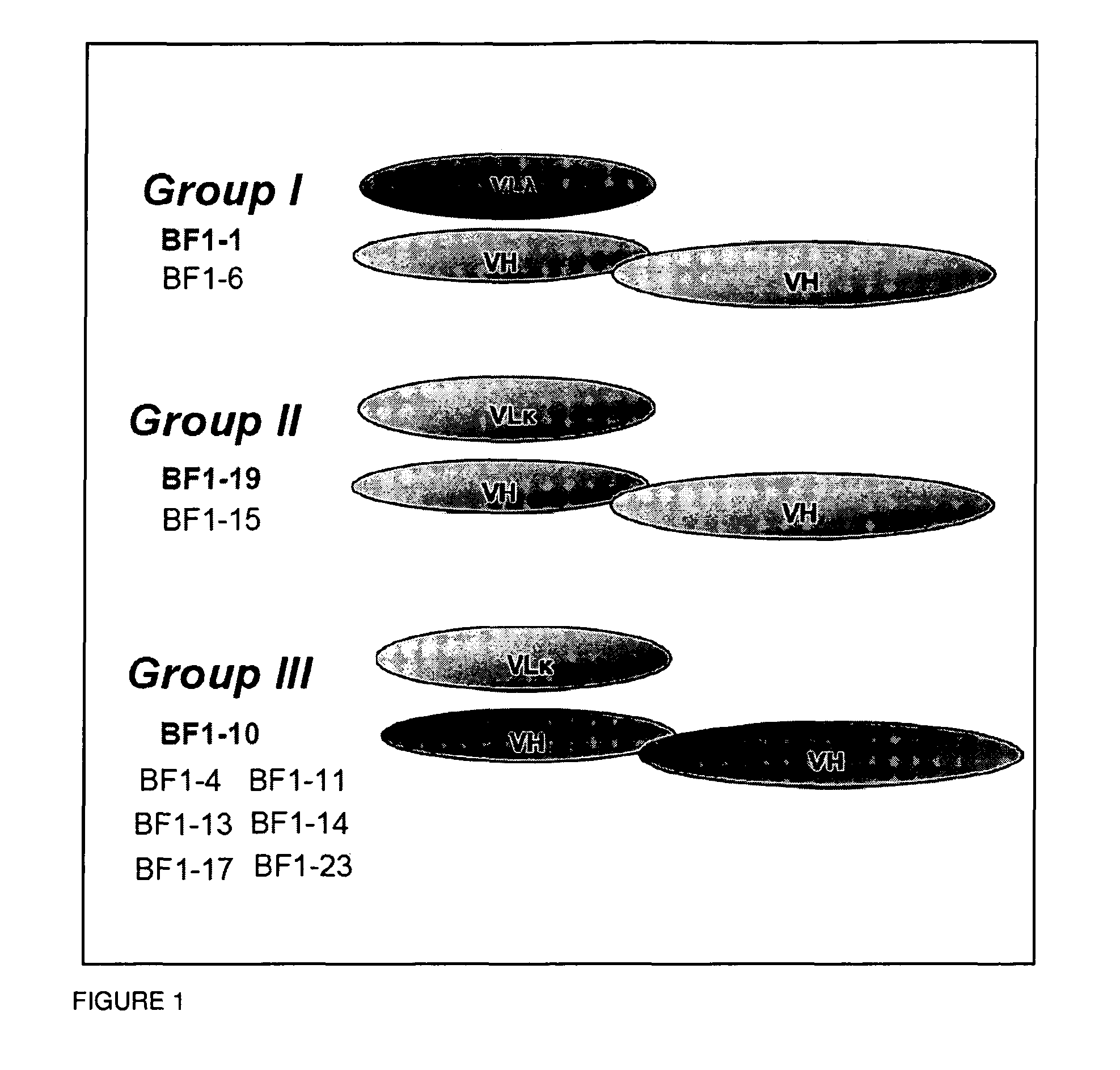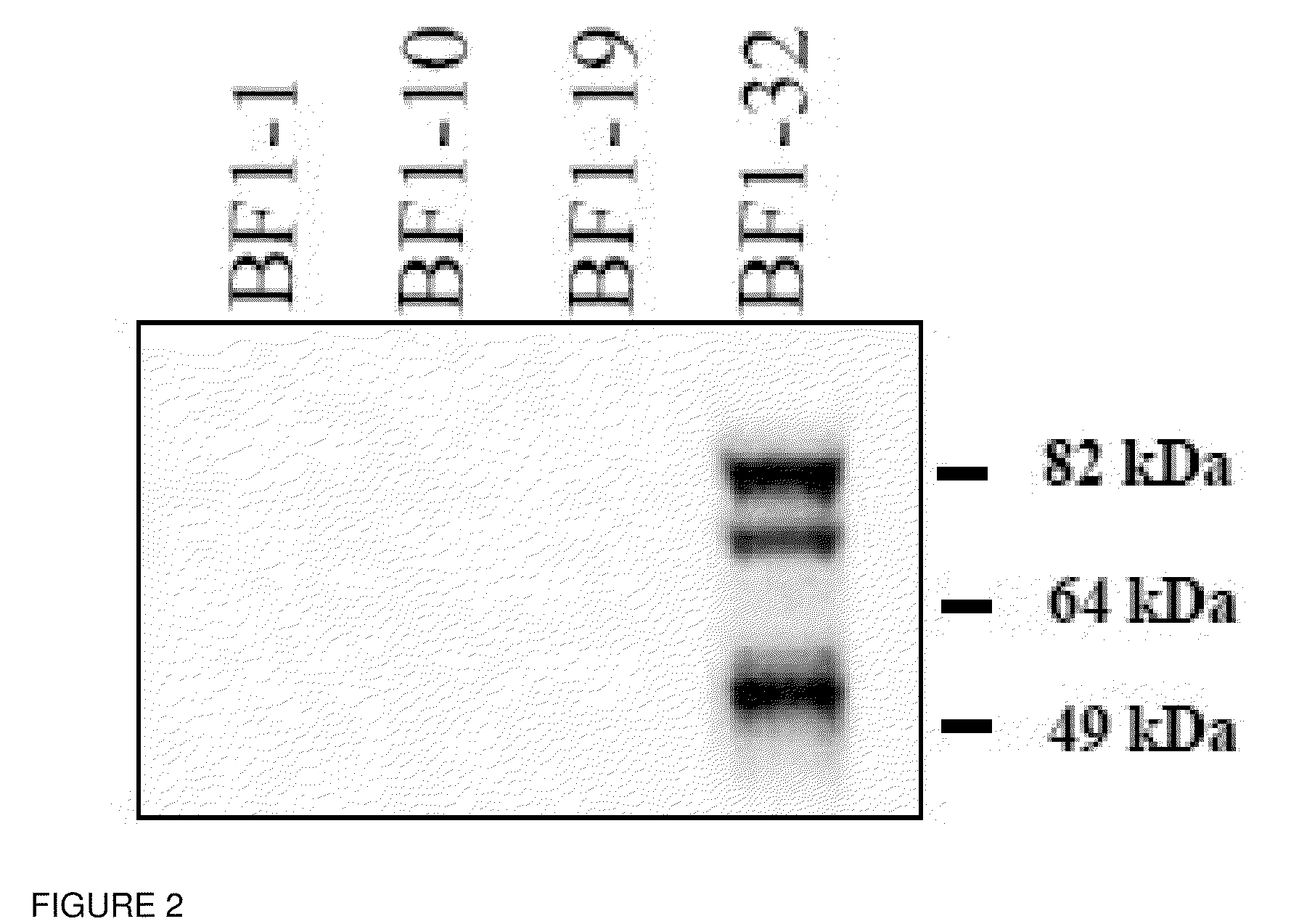Human neutralizing monoclonal antibodies to H5N1 influenza A virus
a technology of monoclonal antibodies and h5n1 virus, which is applied in the direction of drug compositions, aerosol delivery, and infusion cells, can solve the problems of limited antigen information concerning the group iii viruses, limited response to vaccination will require other preventive measures, and h5n1 virus presents a serious pandemic threa
- Summary
- Abstract
- Description
- Claims
- Application Information
AI Technical Summary
Benefits of technology
Problems solved by technology
Method used
Image
Examples
example 1
[0093]Prevention with an effective H5N1 vaccine offers the best means for protection of the general population. However, the elderly, infants and immunocompromised patients with limited response to vaccination will require other preventive measures. Preventing disease with specific high-titer antibody preparations has been established for a wide-range of infectious agents.
[0094]Individuals were immunized with inactivated subvirion H5N1 as described by Treanor et al. (2006) N Engl J Med 354:1343-51, herein specifically incorporated by reference for teachings of vaccination strains and protocols.
[0095]A panel of IgG1 human monoclonal antibodies (HMAbs) to H5N1 were developed, where the panel contains three clusters of different antibodies, as represented by BF1-1, BF1-19 and BF1-10. BF1-1 and BF1-10 have distinct CDR 1, 2 and 3 regions of both heavy and light chains. Interestingly, BF1-19 has the same heavy chain as BF1-1 but the light chain of BF1-10.
[0096]Using a definition of ≧1:8 ...
PUM
| Property | Measurement | Unit |
|---|---|---|
| time | aaaaa | aaaaa |
| pharmaceutical composition | aaaaa | aaaaa |
| mass protection | aaaaa | aaaaa |
Abstract
Description
Claims
Application Information
 Login to View More
Login to View More - R&D
- Intellectual Property
- Life Sciences
- Materials
- Tech Scout
- Unparalleled Data Quality
- Higher Quality Content
- 60% Fewer Hallucinations
Browse by: Latest US Patents, China's latest patents, Technical Efficacy Thesaurus, Application Domain, Technology Topic, Popular Technical Reports.
© 2025 PatSnap. All rights reserved.Legal|Privacy policy|Modern Slavery Act Transparency Statement|Sitemap|About US| Contact US: help@patsnap.com



